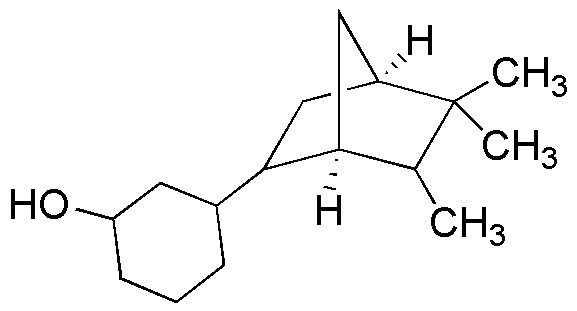Sandenol is widely utilized in research focused on:
- Fragrance Industry: Sandenol is a key ingredient in perfumes and personal care products, providing a unique scent profile that enhances the overall fragrance experience.
- Flavoring Agents: It is used in food and beverage applications to impart a pleasant aroma and flavor, making it popular in the formulation of various consumables.
- Cosmetics: Sandenol serves as a fragrance component in cosmetic products, contributing to the sensory appeal and user experience of lotions, creams, and other beauty items.
- Research Applications: In academic and industrial research, Sandenol is studied for its olfactory properties, aiding in the development of new scent formulations and understanding scent perception.
- Environmental Studies: Its role in ecological research helps scientists understand the impact of scent compounds on wildlife behavior and plant-pollinator interactions.
General Information
Properties
Safety and Regulations
Applications
Sandenol is widely utilized in research focused on:
- Fragrance Industry: Sandenol is a key ingredient in perfumes and personal care products, providing a unique scent profile that enhances the overall fragrance experience.
- Flavoring Agents: It is used in food and beverage applications to impart a pleasant aroma and flavor, making it popular in the formulation of various consumables.
- Cosmetics: Sandenol serves as a fragrance component in cosmetic products, contributing to the sensory appeal and user experience of lotions, creams, and other beauty items.
- Research Applications: In academic and industrial research, Sandenol is studied for its olfactory properties, aiding in the development of new scent formulations and understanding scent perception.
- Environmental Studies: Its role in ecological research helps scientists understand the impact of scent compounds on wildlife behavior and plant-pollinator interactions.
Documents
Safety Data Sheets (SDS)
The SDS provides comprehensive safety information on handling, storage, and disposal of the product.
Product Specification (PS)
The PS provides a comprehensive breakdown of the product’s properties, including chemical composition, physical state, purity, and storage requirements. It also details acceptable quality ranges and the product's intended applications.
Certificates of Analysis (COA)
Search for Certificates of Analysis (COA) by entering the products Lot Number. Lot and Batch Numbers can be found on a product’s label following the words ‘Lot’ or ‘Batch’.
*Catalog Number
*Lot Number
Certificates Of Origin (COO)
This COO confirms the country where the product was manufactured, and also details the materials and components used in it and whether it is derived from natural, synthetic, or other specific sources. This certificate may be required for customs, trade, and regulatory compliance.
*Catalog Number
*Lot Number
Safety Data Sheets (SDS)
The SDS provides comprehensive safety information on handling, storage, and disposal of the product.
DownloadProduct Specification (PS)
The PS provides a comprehensive breakdown of the product’s properties, including chemical composition, physical state, purity, and storage requirements. It also details acceptable quality ranges and the product's intended applications.
DownloadCertificates of Analysis (COA)
Search for Certificates of Analysis (COA) by entering the products Lot Number. Lot and Batch Numbers can be found on a product’s label following the words ‘Lot’ or ‘Batch’.
*Catalog Number
*Lot Number
Certificates Of Origin (COO)
This COO confirms the country where the product was manufactured, and also details the materials and components used in it and whether it is derived from natural, synthetic, or other specific sources. This certificate may be required for customs, trade, and regulatory compliance.


